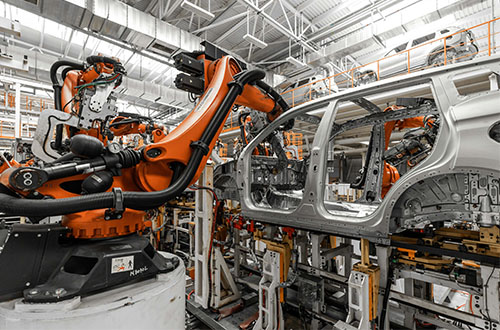

Avoiding Costly Mainframe Modernization Failures

The mLogica Migration Team
How mLogica Ensures Successful Modernization Projects
In today’s fast-paced digital landscape, enterprises face a pressing need to modernize aging mainframe systems, unlocking the scalability, flexibility, and cost-efficiency of cloud computing. Yet, this transition is riddled with risks, unexpected downtime, data loss, integration failures, and even complete project collapse. mLogica, a leader in modernization solutions, offers a comprehensive assessment methodology that mitigates these dangers, ensuring a smooth and strategically aligned migration. Drawing on technical expertise, automation, and real-world insights, this article explores how mLogica’s approach prevents costly failures and drives successful outcomes.
The Modernization Challenge
Mainframes have long been the bedrock of large enterprises, delivering unmatched reliability for critical business processes. However, their high costs, outdated technology, and dwindling pool of skilled professionals now hinder innovation and scalability. As digital transformation becomes essential for competitiveness, shifting to cloud-based architectures is no longer a choice, it’s a necessity. Without careful planning, though, modernization efforts can falter, jeopardizing operations and finances.
A thorough assessment is the cornerstone of success. It uncovers an organization’s IT landscape, application complexity, interdependencies, and technical debt, providing a clear roadmap to minimize risks and optimize post-migration performance. mLogica’s methodology combines automation and expert analysis to deliver this clarity, ensuring no hidden pitfalls derail the process.
mLogica’s Assessment Approach
At the heart of mLogica’s strategy is a deep analysis of the application portfolio. This process identifies mission-critical applications, maps their dependencies, and evaluates their readiness for the cloud. Some applications can be rehosted with minimal changes, while others may need refactoring or a complete rebuild to thrive in a new environment. Proprietary tools accelerate this analysis, reducing human error and offering a precise view of the legacy ecosystem.
Beyond technical evaluation, mLogica aligns the migration with business goals, cost reduction, performance improvement, or agility. This ensures the plan prioritizes high-impact applications and optimizes resource use, tying technical decisions to measurable outcomes. The approach also weighs migration options: rehosting for compatible systems, replatforming for minor tweaks, or refactoring when technical debt demands a deeper overhaul.
Automation with LIBER*DAHLIA
mLogica’s LIBER*DAHLIA tool is a game-changer in this process. It automates data collection, extracting metadata from legacy systems to reveal dependencies and risks that manual reviews might miss. The tool identifies performance bottlenecks, security gaps, and data integrity concerns, enabling proactive solutions. It also generates detailed cost projections, helping organizations budget accurately and avoid financial surprises. This automation enhances efficiency and precision, particularly in complex environments.
Tackling the Last Mile
A common pitfall in modernization is the “Last Mile Challenge”, niche technologies (“Exotics”), such as Easytrieve, Assembler, or PL/I that can disrupt a project if overlooked. mLogica’s methodology meticulously identifies these elements, ensuring they’re accounted for in the migration plan. By addressing these obscure components early, organizations sidestep delays and cost overruns that often emerge late in the process.
Lessons from the Field
Real-world examples underscore the value of mLogica’s approach. A global healthcare provider learned this the hard way during its cloud migration. Lacking a comprehensive assessment, it underestimated the complexity and interdependencies of its legacy systems. The result was unexpected service outages, triggering regulatory scrutiny and customer dissatisfaction. Had mLogica’s methodology been applied, its in-depth portfolio analysis and automated risk detection could have identified these issues early, enabling a migration plan that minimized disruptions and protected operations.
Similarly, a national retailer encountered setbacks after a poorly planned modernization effort. Without evaluating its applications’ cloud readiness, the retailer migrated systems that weren’t optimized for the new environment, leading to performance issues, extensive rework, and delayed timelines. mLogica’s approach, by contrast, emphasizes assessing compatibility and performance upfront. Its detailed analysis would have flagged these shortcomings, ensuring a smoother transition and avoiding costly post-migration fixes.
Technical and Strategic Advantages
mLogica’s approach offers clear benefits. It provides visibility into the IT landscape, mapping dependencies and benchmarking performance to guide resource allocation. Security and compliance risks are spotted early, preventing post-migration crises. Granular risk analysis minimizes downtime and safeguards data integrity, while accurate cost estimates and resource planning curb budget overruns. These elements collectively boost return on investment, turning modernization into a sound financial move.
The methodology also prepares organizations beyond technology. It assesses workforce skills, identifying training needs for managing cloud systems, and evaluates cultural readiness for change. This holistic view ensures the enterprise is equipped—technically and humanly—for the shift.
Crafting a Migration Roadmap
The assessment culminates in a detailed roadmap, outlining a phased implementation that prioritizes critical systems. Clear timelines and milestones keep the project on track, while contingency plans address potential hiccups. Recommendations for resource allocation and training further ensure readiness. Thorough documentation throughout the process aids troubleshooting and future upgrades, while ongoing stakeholder communication keeps everyone aligned.
The Strategic Imperative
Mainframe modernization is complex, blending technical execution with strategic vision. Without a rigorous assessment, enterprises risk disruptions, performance lags, and financial setbacks. mLogica’s methodology, powered by tools like LIBER*DAHLIA, counters these threats with in-depth analysis and business alignment. It transforms potential obstacles into opportunities, paving the way for a secure, scalable cloud future.
For organizations embarking on this journey, investing in such an assessment isn’t just prudent, it’s essential. It mitigates risks, optimizes resources, and positions the enterprise for sustained growth. As digital demands intensify, those who prioritize strategic planning over hasty execution will thrive. mLogica’s proven approach offers that path, blending technical precision with business foresight to unlock the full promise of modernization.








































